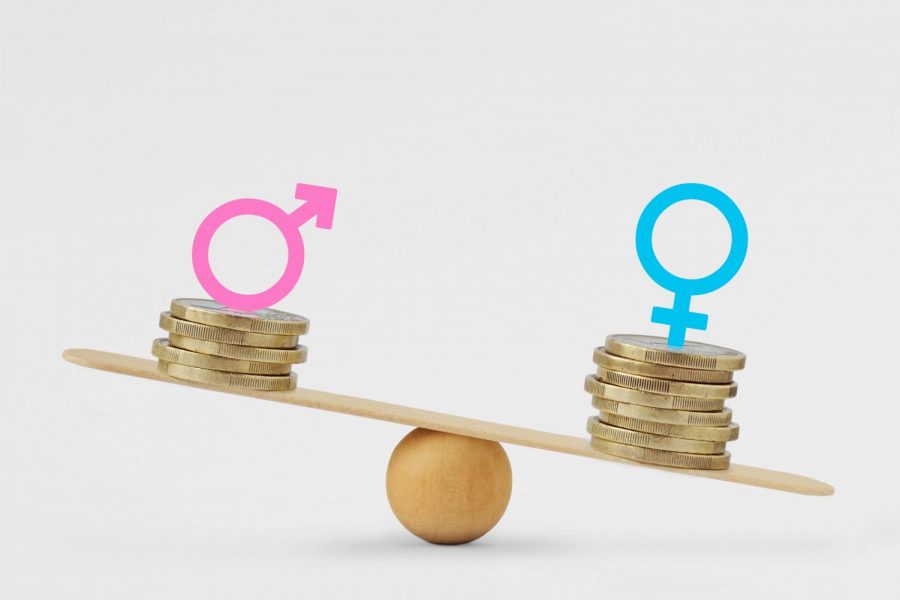Pay disparity is a lot worse than you thought
September 25, 2019
America has always prided itself as being a country where everyone is treated the same regardless of class, gender, or skin color. We have always been told that we are all equals, that we all have the same opportunities and rights. But the sad reality is that we live in a country where gender and race can be the reason for why one earns less. Pay disparity has remained an unresolved problem that has plagued our society for decades. It is time to fix it once and for all.
One recurring statistic from the 2017 US Census Bureau’s data is that women make 80 cents for every dollar a man makes. However, this number is even lower for women of color. According to the same census, for every dollar a white man makes, Asian women make 85 cents, white women make 77 cents, black women make 61 cents, Native American women make 58 cents, and Latina women make 53 cents. This is due to a wide variety of factors, such as unequal access to education, racial prejudice, occupational segregation and even outright pay discrimation.
This pay discrimination has been most recently brought to light by the US Women’s National Soccer Team as they continue to fight for equal income. According to The Guardian, each player on the women’s team makes $110,000 if they become World Cup Champions, while each player on the men’s team earns about $407,000 for doing exactly the same thing. There is no reasonable explanation for why the men’s team makes considerably more, other than outright pay discrimination. If anything, the women’s team should be paid more, because they bring in more revenue while the men’s team hasn’t even been able to consistently make the World Cup.
President Trump recently met with the head of FIFA, Gianni Infantino, and informed reporters that “Gianni and I just had a meeting on women’s soccer and what everybody is going to do to make that better and more equitable.” Infantino commented that “Soccer, which is a big part of this country as well, and women’s soccer, where you are world champions, there is much more to do. The president was saying this to me, and he’s right, and we’re working … we will announce very soon some new initiatives.” Hopefully, they will stand by these words and equal pay will finally become a reality for the women’s soccer team.
However, other examples of obvious pay discrimination can be seen in common careers, and most of them won’t see pay parity anytime soon. According to the National Women’s Law Center, when comparing black women and white men who are surgeons and physicians, black women make only 54 cents for every dollar a white man makes. Considering that this refers to people with similar occupations, and therefore similar qualifications and levels of education, this large of a wage gap is absolutely unjustifiable. Pay discrimination is seen far too frequently for it to be tolerated, and efforts must be made to make sure that it ends.
Additionally, according to the Institute for Women’s Policy and Research, women will only achieve parity by 2059 if it continues at this rate, while black women will have to wait until 2119 and Latina women will have to wait until 2224. Generations of young girls, especially those of color, will have to grow up knowing that the lack of pay equity is a problem that will directly affect them if nothing is done to fix the wage gap.
While most people are aware of how pay disparity affects women, many don’t realize that men of color are also affected as well. According to data from 2015 from the Pew Research Center, black men made only 73 cents for every dollar a white man made, and Hispanic men earned only 69 cents for every dollar a white men made. Although Asian men outearned white men, this is partially due to the fact that Asian men have the highest shares of college educated men out of all race groups.
Black and Hispanic men had the lowest amounts of college and educated men, but even when they were college educated, they still make less than their white and Asian counterparts. According to the 2015 data from the Pew Research Center, black and Hispanic men who were college educated earned only about 80% of what white college educated men made. The fact that men, who are similarly educated, can still make significantly less than a man of another particular race is concerning. How can there possibly be a logical reason that justifies such a large wage gap between men with the same qualifications?
Some say that the pay gap is nonexistent; that women and people of color make less simply because they don’t work as hard or aren’t as qualified. But how can that be true when there is clear evidence that people of similar occupations and education still see a major gap in their earnings solely because of race and gender? In a truly equal society, there would be absolutely no correlation between certain races earning significantly more than their coworkers of other races, because everybody would have the same opportunities to begin with. And there certainly wouldn’t be a correlation between one gender making vastly more than another, because everybody would be treated fairly.
Lack of equal opportunities, discrimination, and unequal access of education are all some of the roots of the problem, and until they are fixed, the pay gap will continue to be a major issue far into the future that impacts the economic freedom of millions in our country. The fact that the most disadvantaged people earn vastly less money than everyone else only goes to show that there truly aren’t equal opportunities for everyone.
Surprisingly enough, there actually is a law in effect with the goal of bridging the gender pay gap. The Equal Pay Act of 1963, however, has so many loopholes that it hasn’t been effective at all. It bans sex-based discrimination by making sure that companies pay men and women equally for “equal work on jobs … which require equal skill, effort, and responsibility, and which are performed under similar working conditions.” However, men can still be paid more because of merit, seniority, and productivity, which makes it hard for women to prove pay disparity and hard for them to sue. Additionally, fines only consist of paying the employee back two years of their owed income, which hardly hurts companies.
Pay disparity doesn’t just hurt the individual, but their families and the economy too. This can be seen especially clearly with the gender wage gap. In 2017, 41% of mothers were the primary income-makers in their families. When mothers bring home less money, they have less to spend on helping their families, and as a result, have less to put back into the economy. However, there is still hope for closing the gender wage gap. The Paycheck Fairness Act was passed in the House earlier this year with precisely the goal of fixing the loopholes of the EPA, but has yet to pass the Senate.
Our society has to realize that it is absolutely unacceptable for such a staggering wage gap to exist in the modern world. Equal pay should be a basic right, and we must make an effort to change that through whatever ways we can, whether it is by making education more accessible for all, or by passing new laws that effectively guarantee that discrimination cannot affect earnings. We can only hope that it’ll be sometime in our lifetime, and not in another 100 years, because we are done waiting.



